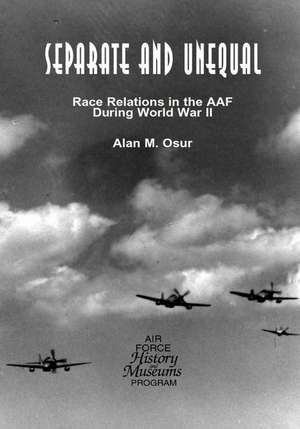Separate and Unequal
Autor Office of Air Force History, Us Air Forceen Limba Engleză Paperback
Preț: 92.81 lei
Nou
Puncte Express: 139
Preț estimativ în valută:
17.77€ • 18.27$ • 14.74£
17.77€ • 18.27$ • 14.74£
Carte disponibilă
Livrare economică 25 ianuarie-08 februarie
Preluare comenzi: 021 569.72.76
Specificații
ISBN-13: 9781508661320
ISBN-10: 1508661324
Pagini: 64
Dimensiuni: 178 x 254 x 3 mm
Greutate: 0.13 kg
Editura: CREATESPACE
ISBN-10: 1508661324
Pagini: 64
Dimensiuni: 178 x 254 x 3 mm
Greutate: 0.13 kg
Editura: CREATESPACE
